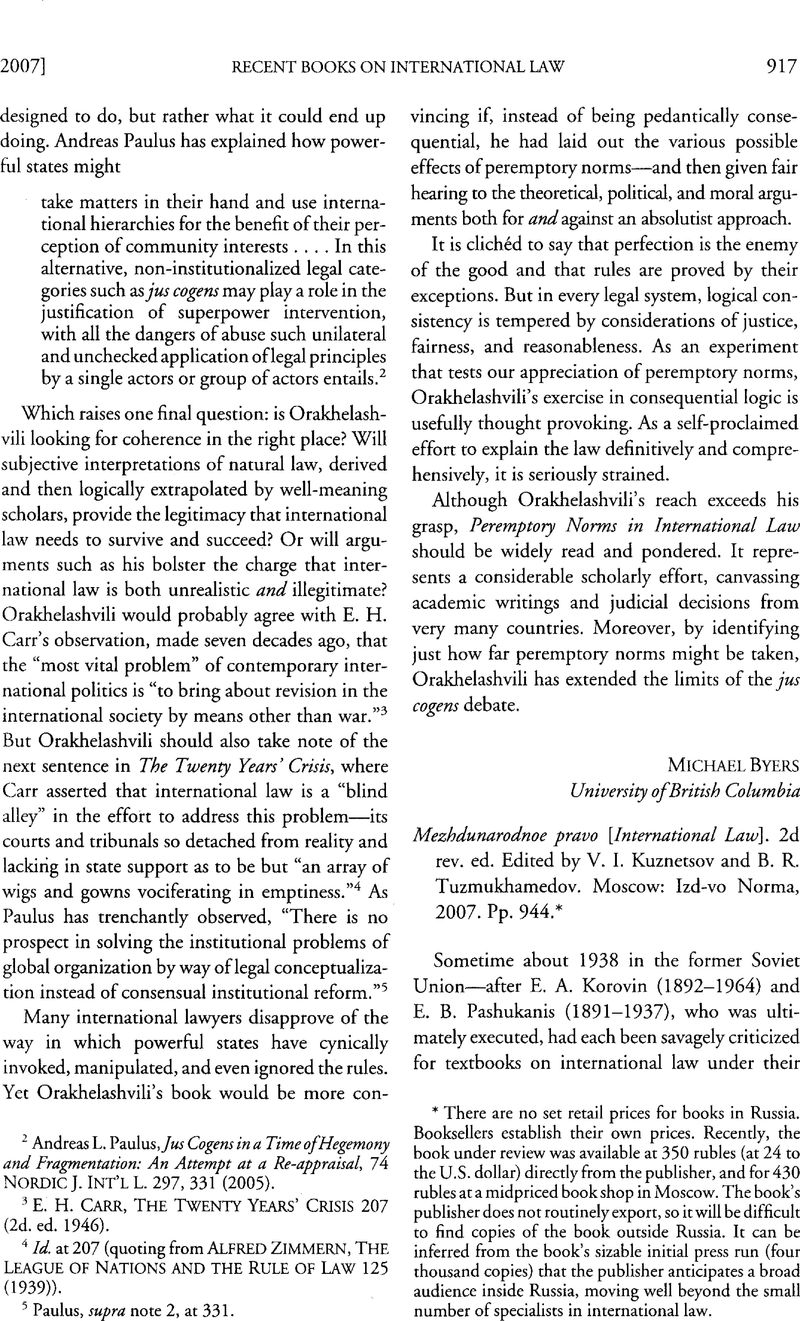Published online by Cambridge University Press: 27 February 2017

1 The present reviewer has traced syllabus development in a series of articles and translations of the landmark syllabi. See my articles International Legal Education of the “Transition Period”: From the New Economic Policy to the Building of Socialism, 2 Soviet Union 162 (1975); On the Origins of International Legal Education in The Soviet Union: The Kravchenko Syllabus? 43 Legal Hist. Rev. 297 (1975). Soviet International Legal Education and “Stability of Laws”: The Syllabus of 1938, 12 J. Int’lL. & Pol. 31 (1979); Soviet International Legal Education: The Pashukanis Syllabus, 2 Rev. Socialist L. 79 (1976); The Syllabus on Public International Law in the USSR, in International Law and the International System 185 (Butler, W. E. ed., 1987)Google Scholar; and The Teaching of International Law in the USSR, 8 Rev. Socialist L. 183 (1982).
2 See International Law (Korovin, E. A. et al. eds., transl. Dennis, Ogden, 1961]).Google Scholar Mention should be made of V. I. Lisovskii (190 4–97), who did venture a single-author textbook, Mezhdunarodnoe pravo [International Law], which went through editions of 1949 and 1955, and encountered severe critical reactions. Lukashuk in the post-Soviet era was bold enough to venture a one-man work once again.
3 Manual of Public International Law (Max Sorensen ed., 1968). This reviewer purchased his new copy at Wildy & Sons Ltd., London, for eighteen shillings—roughly two U.S. dollars—in 1970.
4 I exclude Tunkin’s Theory of International Law (W. E. Butler ed. & trans., 2d ed. 2003) (first edition, 1970 (first English translation, 1974); second edition, 2000), which, although used for instructional purposes, was not designed as a textbook. Tunkin’s early theoretical contribution, “Fundamental Principles of Contemporary International Law” (1956), has been translated by the reviewer at 11 Sudebnik 793 (2006).
5 See supra note 4.